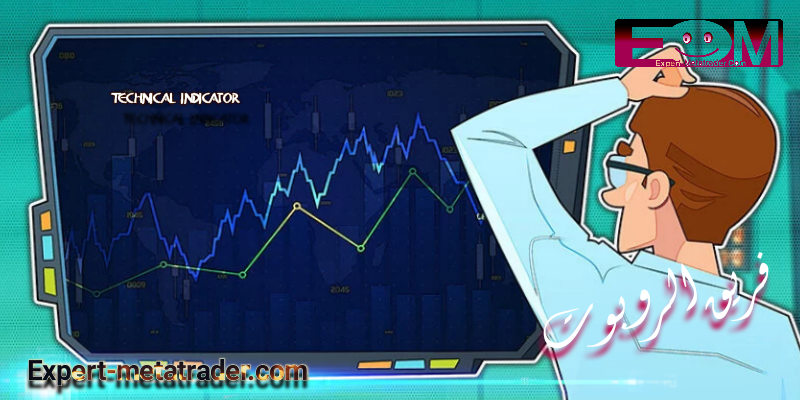
A technical indicator is a mathematical calculation that can be applied to price and volume data. It can even be applied to another technical indicator. The result is the calculation of a value that is used to predict future changes in prices.
Technical indicators are usually lines that go up, down, and above price information on a chart. Forex traders who pursue technical analysis use them.
Labels: Order to build a Forex robot , Build a stock trading robot , Build a trading robot , Trader robot design , Free Forex Robot , Forex robot programming , Forex Expert Making Tutorial , Build a trading robot with Python , Download Forex Trading Robot , Buy Forex Trader Robot , Automated Forex Robot , Free stock trading robot , Learn how to build a Forex trading robot , Alpari trading robot , Forex robot for Android , MetaTrader robot design , MetaTrader robot programming , Forex robot design , Forex robot programming , Automated trading
A technical indicator offers a different perspective, which can be used to well analyze the strength and direction of the original price. By analyzing data history, technical analysts use indicators to predict future price movements and fluctuations.
A technical indicator can have three functions:
1. Warn and inform traders about the creation of a special condition.
2. Predict the price direction.
3. Confirm the analysis proposed by Price Action (price movements) or another technical indicator.
Two categories of technical indicators
There are two categories of technical indicators:
1. Leading indicators that issue trading signals where the trend wants to start
2. Delayed or reversing indicators that follow the price action (price movements).
Leading indicators try to predict prices using a shorter time interval in their calculation, which is before the price fluctuates. The most popular leading indicators are MACD, RSI and stochastic.
These indicators usually work by measuring the “saturation” or “saturation” of an asset. The assumption is that when something is in “saturation” mode, the price reacts and returns. Delay or reversal indicators signal after the start or change of trend. The most common delay indicator is the moving average.
They do not warn you of future price changes, but only tell you what the prices are (falling or rising) so you can trade accordingly. Retrospective indicators, although they cause you to sell late or buy late, but in exchange for missing the initial opportunities, by keeping you on the right side of the market, greatly reduce the risk of trading.
The general approach is that you should use backward indicators during trend markets and leading indicators in side markets.
Position of technical indicators on the chart
Regarding the location of a technical indicator on the chart, it should be noted that there are two categories of technical indicators:
1. Overlaps: Technical indicators that use the same price scale are plotted above the prices. These include the moving average and the Bollinger Bands.
2. Oscillators: Technical indicators that fluctuate locally between two points, minimum and maximum, are drawn above or below the price chart. In this category, for example, we can mention MACD, RSI and stochastic.
Labels: Order to build a Forex robot , Build a stock trading robot , Build a trading robot , Trader robot design , Free Forex Robot , Forex robot programming , Forex Expert Making Tutorial , Build a trading robot with Python , Download Forex Trading Robot , Buy Forex Trader Robot , Automated Forex Robot , Free stock trading robot , Learn how to build a Forex trading robot , Alpari trading robot , Forex robot for Android , MetaTrader robot design , MetaTrader robot programming , Forex robot design , Forex robot programming , Automated trading
Four types of technical indicators
There are four types of technical indicators:
- Follow the trend
- Momentum
- Oscillation
- Volume
Trend-following indicators
Trend-tracking indicators help traders to trade a currency pair that has an uptrend or downtrend. These indicators can help identify the direction of the trend and tell us whether the trend really exists or not.
Follow-up indicators measure the direction, direction and strength of a trend using a kind of price averaging. If the price moves above the average, it is considered in an uptrend. When the price moves below the average, it shows a downward trend.
The following are examples of sequence indicators on the trend:
- Moving averages used to identify current trends as well as support and resistance levels.
- MACD is used to show changes in strength, direction, momentum and duration of a trend.
- Parabolic SAR used to find possible price reversals.
Motion indicators (momentum)
Momentum indicators help identify price speeds by comparing prices over time. They can also be used for volume analysis. They are calculated by comparing the current closing price with the previous closed prices. Typically, they are shown as a line below the price chart that fluctuates as the momentum changes.
When there is a divergence between the price and the momentum indicator, it can be a sign of price change in the future. Here are some examples of momentum indicators:
- Stochastic, which shows where the price closes relative to the floor-to-ceiling range in a set of specific periods.
- CCI is an oscillator that helps detect periodic (rotational) or trend reversal changes.
- RSI measures the strength or weakness of a currency pair by comparing its uptrends and downtrends over a period of time.
Fluctuation indicators
Fluctuation indicators measure the speed at which prices move, regardless of direction. Fluctuation indicators are generally defined in terms of changes in historical price ceilings and ceilings. They provide useful information about the scope of buying and selling in a given market and help traders identify areas where prices may change direction.
The following are examples of volatility indicators:
- Bollinger bands that relatively help determine whether prices are high or low.
- Actual average range or ATR, which measures volatility by taking into account any price gap.
- Standard deviation, which is a statistical measure of market fluctuations and measures the degree of dispersion of prices from the average price.
Volume indicators
Volume indicators measure the strength of a trend or confirm the direction by averaging trading volume (or smoothing).
Often the strongest trends occur when the volume increases.
The following are examples of volume indicators:
- Chaikin Money Flow (CMF), which measures the weighted average of total volume and distribution over a specified period of time. The rule behind CMF is that the closer the closing price gets to the price ceiling, the more aggregation there is.
- On Balance Volume (OBV) measures buying and selling pressure as a cumulative indicator that sums the volume on the uptrend and subtracts the volume on the downtrend.
- Volume Oscillator (VO) shows the difference between two moving averages of the volume of an asset, expressed as a percentage. How it works is based on the assumption that the actual amount of volume is not important, but the change in volume is more technical than in the recent past.
How to minimize erroneous signals
No technical indicators are error free. To minimize false signals, in which price movements differ from what the indicator shows, the technical indicator should often be combined and “tested” with other indicators to confirm its reliability.
Such a thing is called waiting to “confirm” the signal issued by the technical indicator. Additional tests are called “filters”. The most common filters can be classified into the following categories:
- Time: The signal must be present for a certain period of time. For example, a 50-day moving average should be higher than a 200-day moving average for at least 3 business days.
- Magnitude: The signal must be within a certain range. For example, an oscillator must be greater than 80% or less than 20%.
- Volume: Indicators are usually more important when they are based on volume.
Some indicators work better in specific time horizons, so it makes sense to choose indicators that are appropriate for your trading horizon. The frequency and frequency of trading signals is another factor to consider.
If you are a daily trader, you should look for indicators that send out a lot of trading signals in a day. An oscillator trader wants less signal. Using a combination of indicators and price action analysis usually results in fewer signals and lower trading costs.
Always remember that technical indicators are just indicators ور indicators! They do not guarantee that the price will move in a certain direction.
With technical analysis, you can not guarantee that this is a reversal of the real process or fake until the truth is known. That is why it is recommended to view charts with multiple time intervals in order to infuse more spirit into your trading context.
Labels: Order to build a Forex robot , Build a stock trading robot , Build a trading robot , Trader robot design , Free Forex Robot , Forex robot programming , Forex Expert Making Tutorial , Build a trading robot with Python , Download Forex Trading Robot , Buy Forex Trader Robot , Automated Forex Robot , Free stock trading robot , Learn how to build a Forex trading robot , Alpari trading robot , Forex robot for Android , MetaTrader robot design , MetaTrader robot programming , Forex robot design , Forex robot programming , Automated trading







